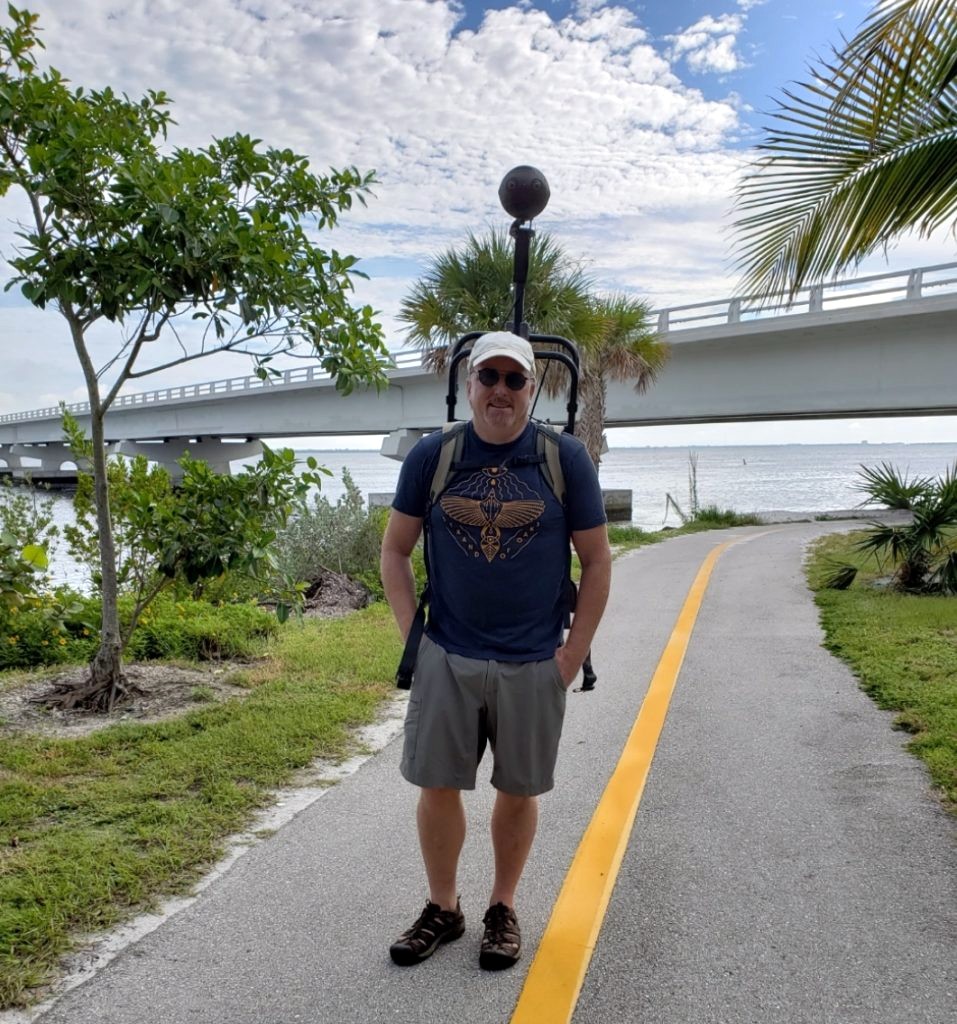The VR business changes quickly. Really quickly.
“It’s a little bit of a rodeo,” said Larry Strange, founder of Unified Web Media, makers of the 76ers Fieldhouse virtual reality tour.
The Wilmington company offers virtual tours, drone work and 360 panoramas — all things that are evolving almost by the minute.
“There’s a progression, if you look at my projects from last year to now” said Strange, who started Unified Web Media just last summer. “The tools that I used six months ago ago are much different from the tools that I’m using now, not just because I’m spending more money for better stuff, but because I’m able to access hardware and software that just didn’t exist.”
One example is the Oculus Go, an all-in-one wireless VR headset that sells for around $200, making immersive VR more versatile and accessible than it’s ever been.
Strange’s evolution in the field started with Microsoft, where he worked as a technology strategist for years. But it was Google that got him immersed in the VR world.
“As a Google local guide, I was pushed toward the 360 images and contributing to Street View,” he said. “I started getting into not just the VR playback component, but also the content creation for the panoramic images.”

Larry Strange wearing a Google 360 camera.
Interesting fact: Many of the blue lines (indicating streets that have Street View footage) you see in Google Earth are made by local guides on foot, with the panoramic camera mounted over their heads — and Strange is one of them.
You can actually contract Strange, a Google Trusted Street View Photographer with over 2,300 images on Google Earth, to create panoramas for Google Earth. If you’re lucky, they might even become blue lines, allowing people to tour a property that would otherwise be off-limits to Google via Earth.
“I march around with that backpack and I record at 30 frames per second,” he said. “Then I take the massive file and upload it. It’s about 50/50 that it will be street view [as opposed to a panorama — the blue dots]. Even if it isn’t they will always accept the panoramas.”
It was working as a Trusted Google Street View Photographer that pushed him toward more immersive and innovative technologies.
“Of course you start to want to do more, and Google puts you in a very tight box of what you can and cannot do as it relates to a virtual tour experience,” he said. “That got me interested in what tools are out there to be able to take the panoramas and incorporate interactivity and multimedia elements.That really is what led me to the virtual tour creation process.”
Strange doesn’t know exactly where the tech will be in a few months, let alone a few years, but accessibility to the tech for end users — which are, right now, headsets — is the most predictable trend.
“I think that the wireless headsets will become more and more popular and affordable,” he said. “I do think that as we go forward, I see things getting cheaper and faster, and, most importantly, smaller and closer to the comfort level of a pair of glasses.”
For the 76ers Fieldhouse project, which Unified Web Media did in partnership with Moonloop Photography, there is media within the tour — for example, there are TV screens you see with additional video content playing. Before long, with tech like the Microsoft Hololens, he’ll be able to combine VR with augmented reality.
Creating a VR tour like the one done for the 76ers Fieldhouse was a complex task that included:
- High-resolution SLR panoramic 360 image capture (in partnership with Moonloop)
- Color grading and stitching for 360/VR integration (in partnership with Moonloop)
- Linking of 360 images with navigational arrows and hotspots
- Creation of thumbnail navigation for all 3u60 images with user selectable on/off buttons
- Integration of selected 2D images and/or video content
- Patching of company logo into the nadir of each 360 image
- Creation of URL hotspots to launch external web content from inside the 360 panorama
- Compatibility with all VR headsets adhering the WebVR specification
- External hosting with analytics
- Publishing all 360 panoramas into Google Street View and Google My Business with logo attribution
The next tour could potentially be a whole different ball game: The VR business “is a commitment to stay up with everything and take advantage of it,” Strange said. “Grab it and use it.”
Heads up, Unified Web Media will have a table featuring the VR tour at the Philly Startup Leaders Entrepreneur Expo on May 8, part of Philly Tech Week 2019 presented by Comcast.
Before you go...
Please consider supporting Technical.ly to keep our independent journalism strong. Unlike most business-focused media outlets, we don’t have a paywall. Instead, we count on your personal and organizational support.
3 ways to support our work:- Contribute to the Journalism Fund. Charitable giving ensures our information remains free and accessible for residents to discover workforce programs and entrepreneurship pathways. This includes philanthropic grants and individual tax-deductible donations from readers like you.
- Use our Preferred Partners. Our directory of vetted providers offers high-quality recommendations for services our readers need, and each referral supports our journalism.
- Use our services. If you need entrepreneurs and tech leaders to buy your services, are seeking technologists to hire or want more professionals to know about your ecosystem, Technical.ly has the biggest and most engaged audience in the mid-Atlantic. We help companies tell their stories and answer big questions to meet and serve our community.
Join our growing Slack community
Join 5,000 tech professionals and entrepreneurs in our community Slack today!

The man charged in the UnitedHealthcare CEO shooting had a ton of tech connections

Delaware students take a field trip to China using their tablets and ChatGPT

From rejection to innovation: How I built a tool to beat AI hiring algorithms at their own game



